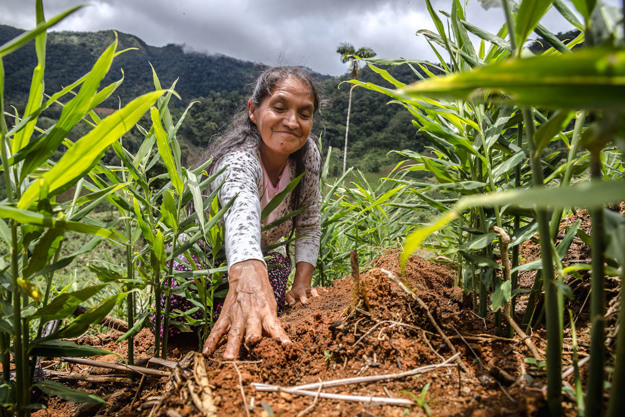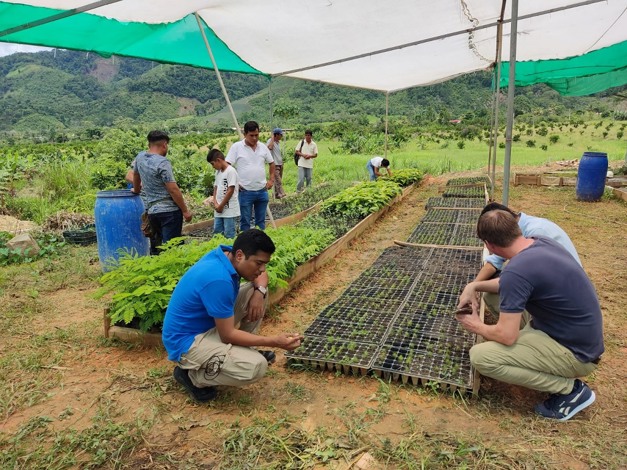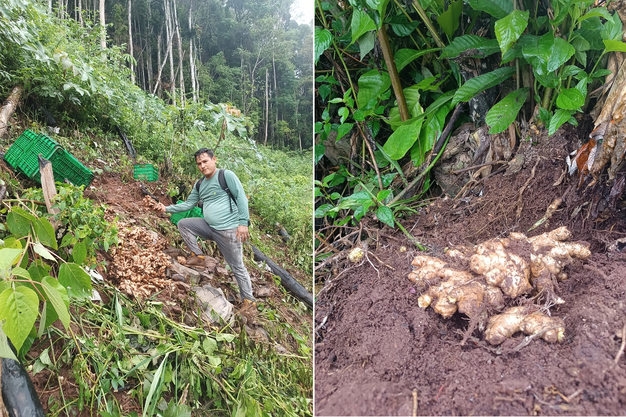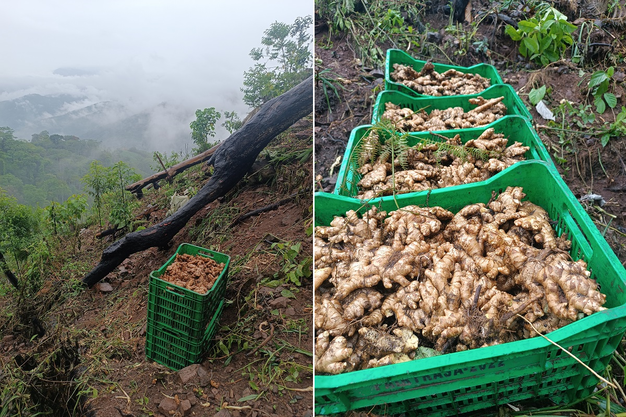There will be limited availability of Peruvian ginger until at least mid-June when the new crop is harvested. This ginger is smaller and has a sharper flavor than Chinese ginger. "Some ginger, which grows on steep mountain slopes, can be uprooted now, but the unusually wet conditions caused by El Niño make that too hard," begins Oscar van Reisen, purchasing manager at Fairtrasa.
 Grower of ginger
Grower of ginger
The company, headquartered in Switzerland, has a sales office in the Netherlands and branches in countries of origin: Mexico, the Dominican Republic, Peru, and Spain. It specializes in organic and Fairtrade fruits and vegetables and has ginger plantations near Pichanaki and Satipo, two districts about 400 km east of Lima in central Peru. "There, in the jungle, conditions are still fairly pristine for cultivation. We also work with some growers there."
From grandfather to grandson
Peruvian ginger is currently in short supply and will only become more so in the next few months. "There are no more abuelo ginger. Abuelo means 'grandfather' in Spanish and is how Peruvians refer to the ginger from the third-to-last harvest over a year old. Nor is there Padre ginger, the eight to 12-month-old product. And of the ginger still available, hijo is the youngest crop of up to 7, 8 months old," says Oscar.

"Some of that is in the ground, but it's difficult to harvest during the rainy season. El Niño brought the rain earlier. November is usually quite dry in that area, but it was already raining when I visited last year around that time. Fortunately, because the ginger's in the ground, it doesn't suffer as much from increased temperatures as, say, mangoes. That crop was truly disastrous in Peru this season."
Oscar explains that Peruvian ginger's cultivation cycle lasts eight months, but it can remain in the ground after that. "Then the roots are in storage, so to speak, though they still grow very slightly. Most Peruvian growers prefer keeping their ginger that way until harvest. Once they harvest those hands, they start drying out. The disadvantage of storing in the ground is the somewhat higher chance of mold growth. In China, things are different. They harvest once a year and store the ginger there," he says.

Chinese imports
Products from other countries, especially China, can make up for the ginger shortage from Peru. Oscar, though, points out some differences between the two origins. "Chinese ginger is bigger and tastes less intense. We only import from Peru because many of our customers appreciate the stronger taste. But we are planning to establish an import line from China. Some clients want those larger hands. We're even currently testing the Chinese variety in Peru. There are no results yet; in a few months, we'll know more."
And in times of scarcity, Van Reisen explains, diversifying countries of origin naturally provides increased options to keep serving buyers year-round. Therefore, besides China, he does not rule out other origins from which they could source ginger in the future. "Thailand and Vietnam are possibilities. But, we only do organic ginger, and that growing method is generally less developed there. Organic growers from countries other than Peru are always welcome to contact us," Oscar continues.
Less waste, but trickier processing
Fairtrasa supplies both retailers and the processing sector. "The latter struggles a bit with the smaller and sharper-tasting Peruvian product. You need less of it to get the intended flavor, but it doesn't peel as easily."
Though ginger was becoming popular before the pandemic, its healthy properties significantly boosted sales during that time. "That led to more people getting involved with ginger in Peru. All kinds of businesses popped up. Now, though, also because there have been some issues with fungi and bacteria, that has normalized again," Oscar points out.

Nursery project
To increase biodiversity on and around their plots and thus restore soil richness and reduce disease pressure, Fairtrasa started a nursery project in Satipo. "In between the cultivation cycles, various crops will be planted in the ginger fields to enrich the soil and combat deforestation. We, thus, set up the Doña Dorotea Association."
"We work with the National University of the Center of Peru (UNCP) to create a healthy mix between cultivation and ecosystem care. Advice to growers in the region makes up much of this project, too," Oscar concludes. This is Fairtrasa's mission, which is described on its website as, "We are here to save soils, improve people's livelihoods, and bring healthy food to the world."
 Fairtrasa
Fairtrasa
Oscar Reisen
Oscar.reisen@fairtrasa.nl
www.fairtrasa.com
